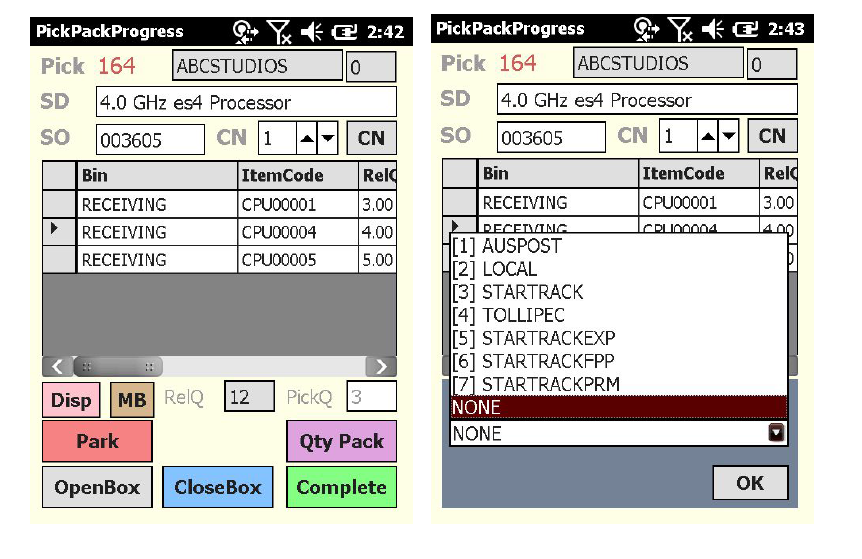|
Quite often I visit distribution businesses where they run a pick and pack process. The pick process is where the picker will receive a paper docket printed out from the ERP system and pick the products from the piece of paper. This piece of paper may or may not have bin locations on it, and the process is completely manual. Once the pick process is completed, the picker would put the products onto a packing table where a different person will check the products and pack the products into boxes. This is called the packer. When the packer has completed this process, they would normally take the cubic measurements of each box and enter this into the Freight software. The labels will print, and then the packer sticks the label onto the boxes.
One of the reasons a business will want to implement a WMS is to eliminate unnecessary steps and implement best business process. With our warehouse management solution, there are immediate business gains when implementing the WMS to go from the above manual and paper process to an electronic data capture method. 1. The PDA device will do the check as the user will need to scan the barcodes of the products when picking them. The QTY picked on the scanner will increment accordingly. 2. Management and administration will know the phase the sales order is up too in the warehouse. As our WMS has phases such as released, retrieved, picking and completed. 3. KPI's and dashboards are introduced so management are able to generate some great reports to know how the warehouse team are going and help optimise space in the warehouse. 4. If there is no packing feature turned on, the delivery or shipment document will be automatically created in the ERP from the PDA device when the user completes the pick. This can also then be printed automatically from the WMS. 5. There is no need for the picker to trek into the office to let the office know they have finished the pick or to grab the next piece of paper for the next pick, it is completely automated. Once the pick is complete, the next order is already displayed on the PDA device for the picker to start. After each operation our WMS can send an email to operations or administration to keep everyone informed of the progress. 5. With our WMS we also have a packing feature. This allows the user to scan the products and close the box. This feature is needed when the WMS has integrated freight on. It allows users the select the freight company and enter in the cubic dimensions of each box when completing the pack. Our WMS will automatically print the correct freight labels and create any necessary manifests for the Freight company. The consignment number will be also available on the delivery or shipment document. 6. All information such as which items have been packed into which box are sent to the the ERP into the delivery or shipment documents. This means this process is used for EDI, as during the packing phase the SSCC labels can be printed. 7. Streamline operations from the pick to the pack process. One of the main advantages is the complete pick and pack process is completely streamlined. Barcoding improves accuracy and streamlining operations improves efficiency and decreases labor costs. 8. Freight integration saves on labor costs and improves on the user experience for the warehouse team. The packing phase is very important for a lot of distribution businesses and The RIC Group are pleased to be able to offer this feature in their WMS software. Capturing which products have been packed into which box and having this information visible in the ERP is the next level of WMS. From here being able to bring in freight integration is the key to total Supply Chain Solution. Comments are closed.
|
Archives
June 2024
|
Call Us: +61 466 368 934
- Home
-
Solutions
-
Advanced Logistics
>
- Advanced Logistics for Acumatica
- Advanced Logistics for SAP Business One
- Advanced Logistics for Odoo
- Advanced Logistics for Netsuite
- Advanced Logistics for Business Central
- Advanced Logistics for Sage Intacct
- Advanced Logistics for MYOB Acumatica
- Advanced Logistics for MYOB EXO
- Advanced Logistics for S/4 HANA
- Advanced Logistics for Sage 300
- Advanced Logistics for Tencia
- Advanced Logistics for Oracle Cloud ERP
- Transport Management System
- Last Mile Delivery
- Warehouse 3D Digital Twin
- RFID
- AUTONOMOUS MOBILE ROBOTS
-
Advanced Logistics
>
- Support
- Blog
- Success Stories
- About
- Contact Us


